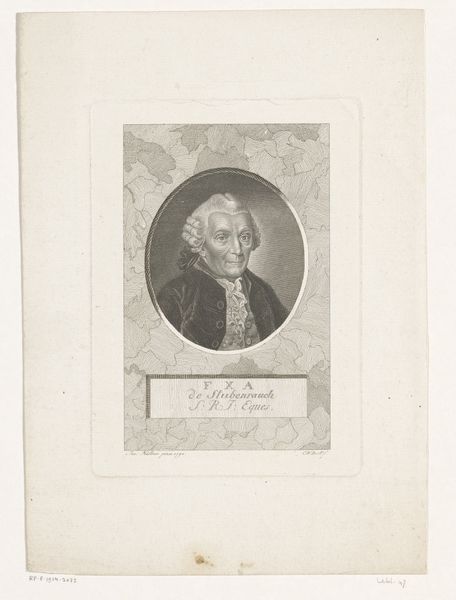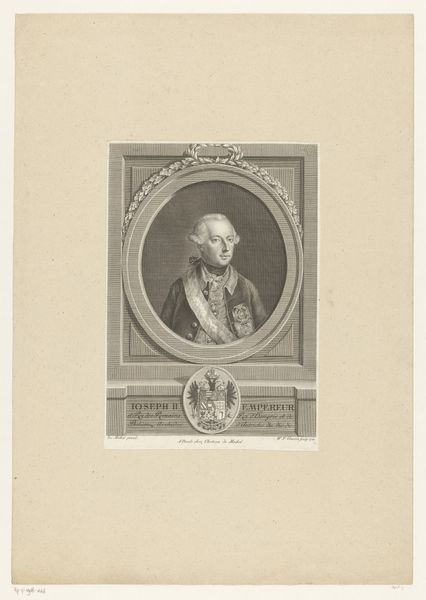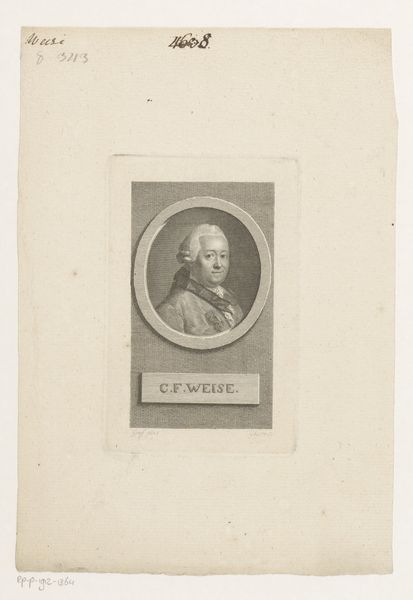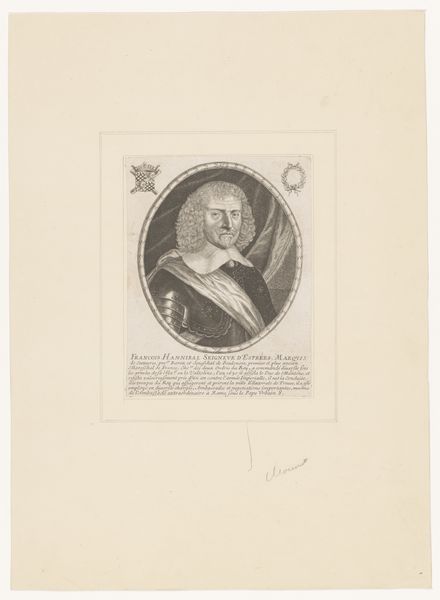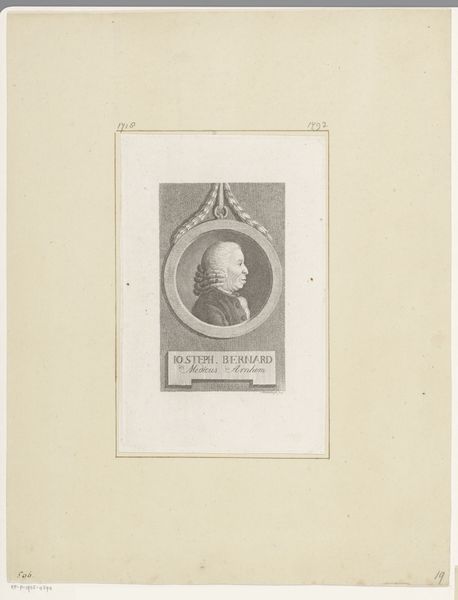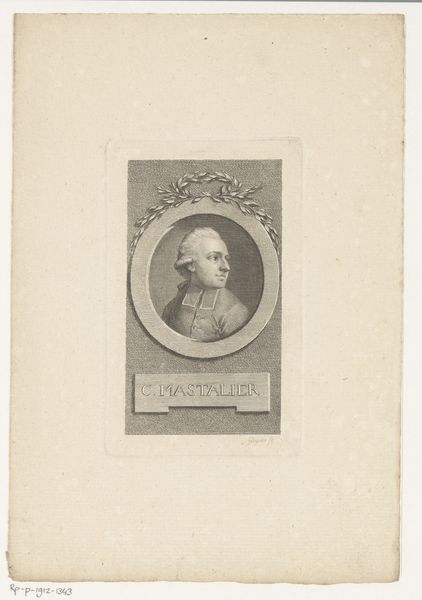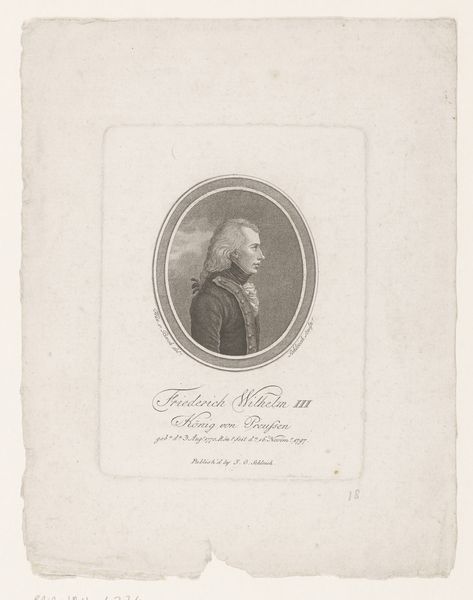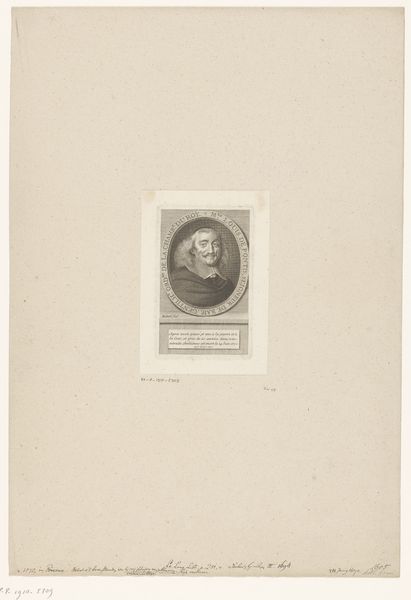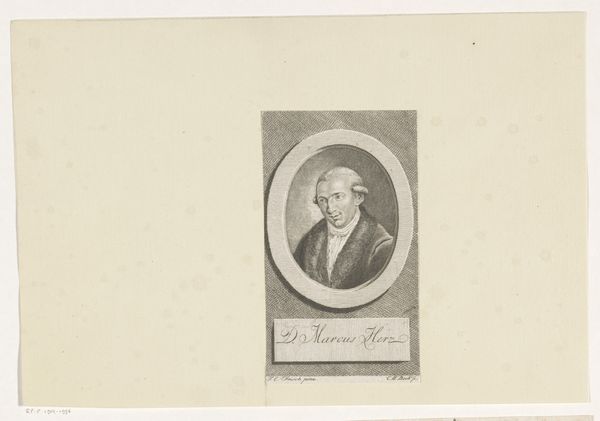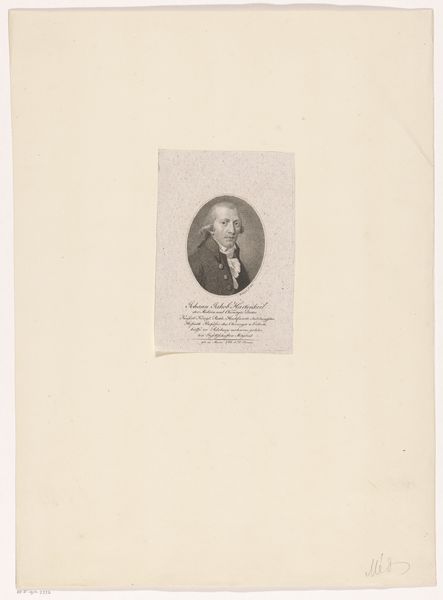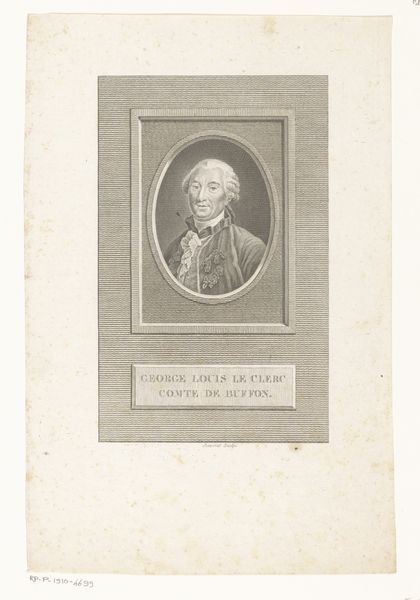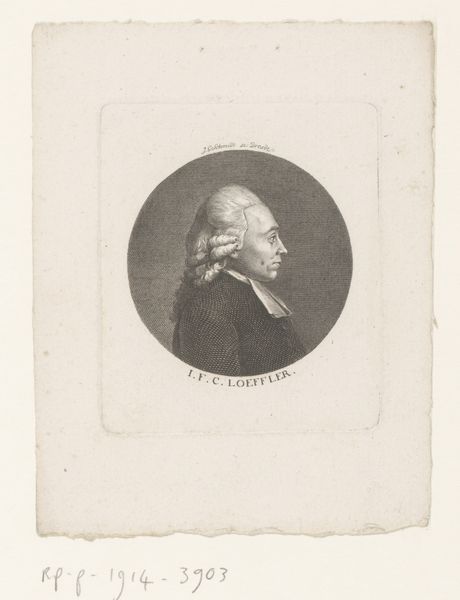
print, paper, engraving
#
portrait
#
neoclacissism
# print
#
old engraving style
#
paper
#
engraving
Dimensions: height 64 mm, width 58 mm
Copyright: Rijks Museum: Open Domain
Curator: This is a portrait of Georges-Louis Leclerc, Comte de Buffon. Dating roughly between 1773 and 1819, this print is currently held at the Rijksmuseum. Editor: My first impression is one of formality, even restraint. The figure is contained, almost trapped, within that circular frame. The muted greys amplify this sense of quiet containment. Curator: Absolutely. This piece exists firmly within the Neoclassical art movement, marked by that deliberate restraint. The image evokes philosophical principles, speaking to broader ideas around rationality and order that permeated that era, impacting even personal identity. Consider Buffon's scientific work—how might societal expectations of enlightenment rationality shaped this representation? Editor: Indeed. The oval frame, wreathed in laurel, feels symbolic too, reminiscent of Roman ideals and civic virtue. I'm interested in the bow at the top: what emotional weight does that formal flourish contribute to the symbolism of achievement and recognition? What kind of tension might exist between scientific rationalism and idealized status in revolutionary France? Curator: Good eye. When viewing images of people during the Enlightenment we must always wonder if those portrayed had freedoms extended to those from marginalized communities or not. This representation likely bolstered elitist ideals of patriarchy at that time. Editor: Considering the broader implications, does this seemingly simple engraving actively reinforce existing social hierarchies of that time through its symbols of status and achievement? I wonder, too, how viewers today react to these symbols? Does this visual vocabulary still hold the same weight, or have those meanings evolved? Curator: Examining such works is so important for helping understand the role they have played and continue to play in modern visual culture. By identifying what ideologies such art promotes we can challenge inequities today. Editor: Agreed. And for me, the enduring power of these carefully chosen visual motifs lies in how they reflect both the individual ambition and the larger cultural aspirations of an era. The ability of an image to convey complex ideas still has cultural and political impact today.
Comments
No comments
Be the first to comment and join the conversation on the ultimate creative platform.
